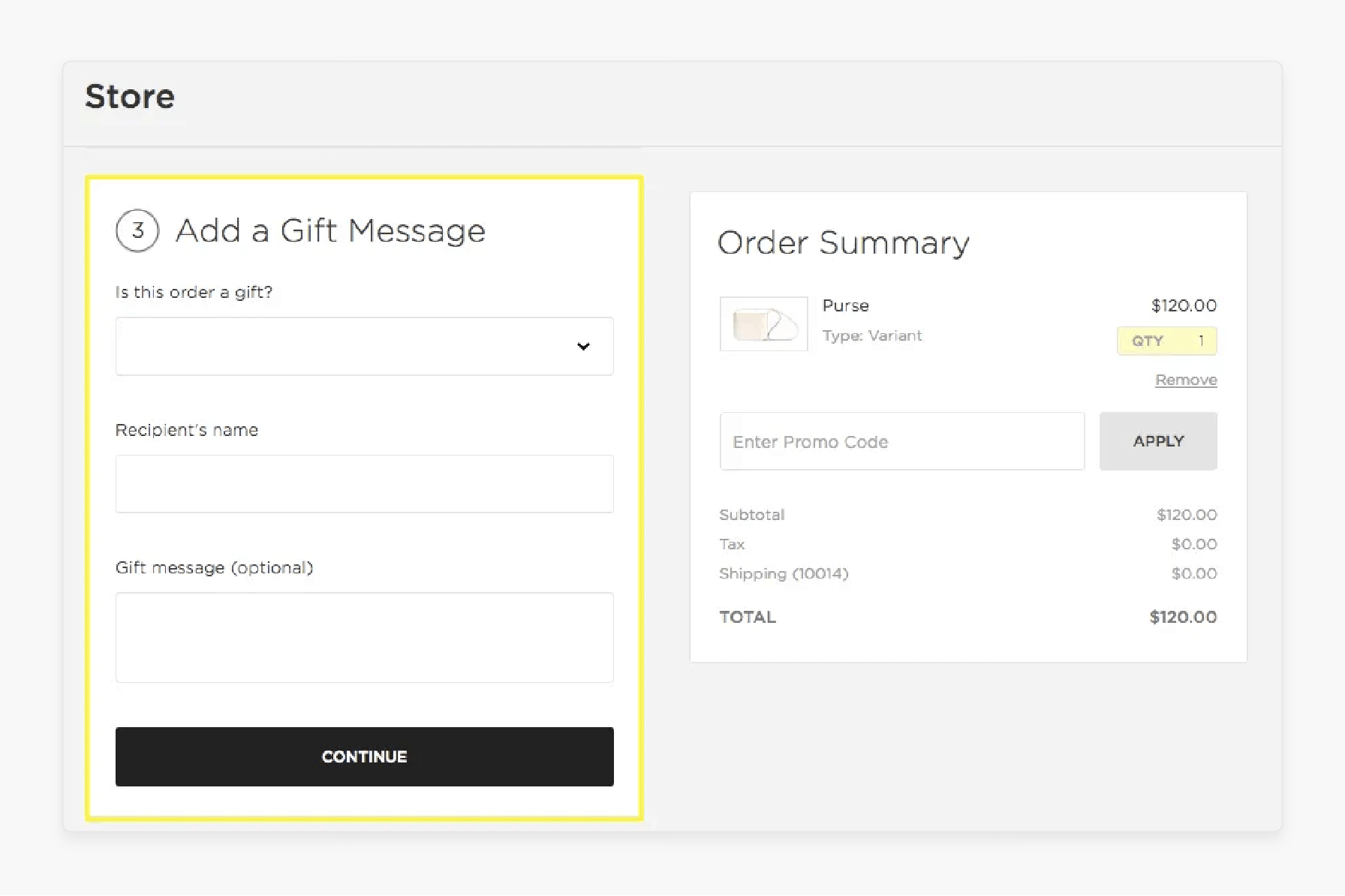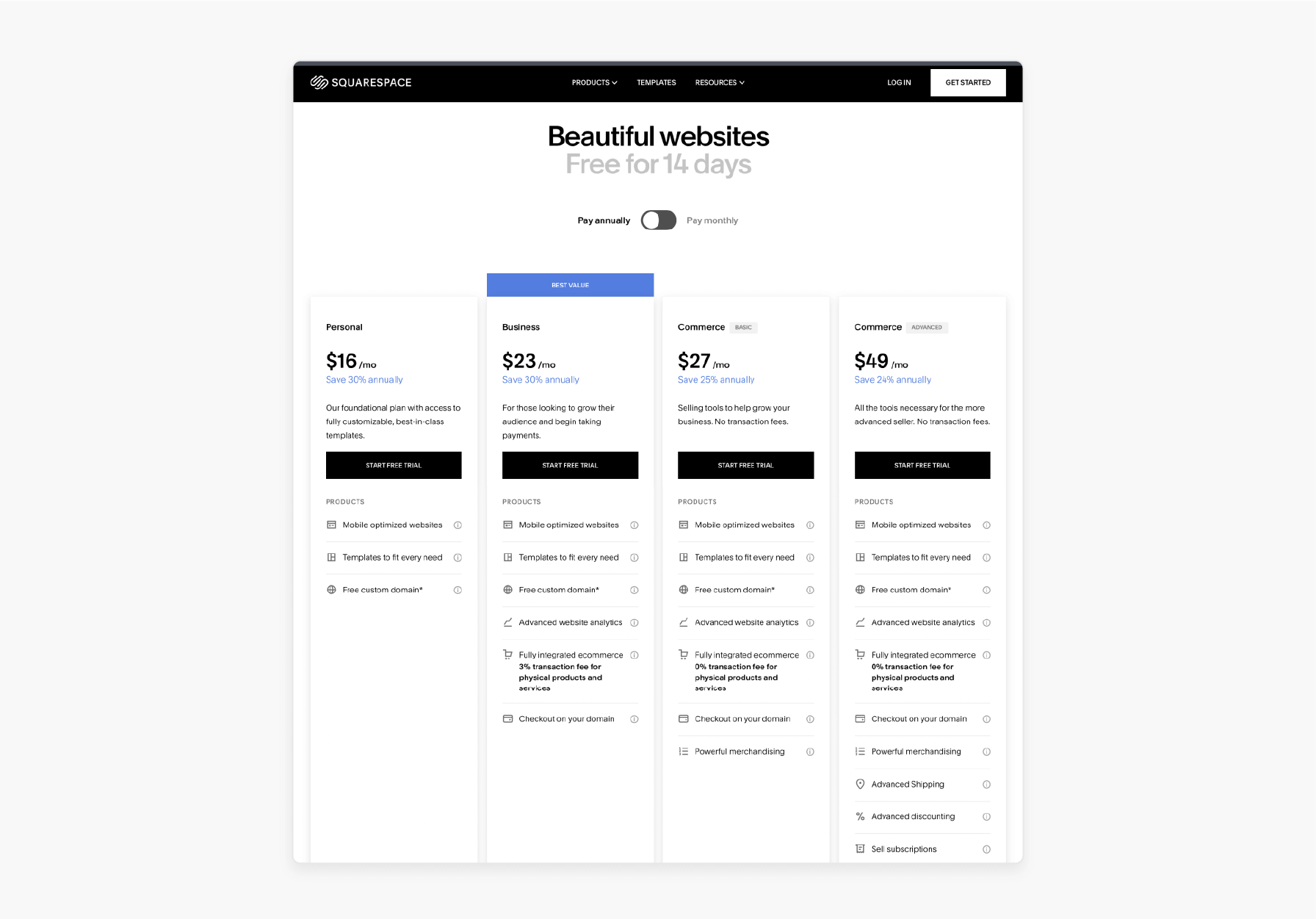
Squarespace vs Magento: Which Ecommerce Platform is Better to Use?
Are you choosing between simplicity and customization for your store? Squarespace vs Magento compares a beginner-friendly website builder. Squarespace is ideal for small businesses with simple needs. Magento, part of Adobe Commerce, excels with advanced customization and scalability.
This article will cover how Magento stands out and find the best choice for your ecommerce goals.
Key Takeaways
-
See which platform aligns with your business needs.
-
Compare features of Squarespace and Magento.
-
Key differences between both platforms.
-
Check how pricing structures impact your budget.
-
Review the advantages and limitations for better decision-making.
-
Comparison of Magento (Adobe Commerce) and Spacespace Advantages
-
Difference Between Magento and Squarespace: Limitations of the Platforms
-
Which Ecommerce Platform is Better to Use: Squarespace or Magento
What is Squarespace vs Magento?
1. Overview of Squarespace

Squarespace is a comprehensive site builder. It is designed for ease of use and visual appeal.
Squarespace is a simple website builder with integrated ecommerce features. It has modern templates and a user-friendly drag-and-drop interface. It is ideal for small and medium-sized businesses. Squarespace limits customization options and also includes important security features like SSL certificates. It lacks the scalability and advanced features that Magento provides.
2. Overview of Magento
Magento is a popular open-source ecommerce platform. It helps build for growth and scalability.
Magento provides powerful tools for customization. It is ideal for small to medium-sized businesses and larger businesses. For those needing more complex navigation, a Squarespace mega menu can enhance site organization and usability. It offers enhanced features like order management, product management, and smooth integration. It is easy to create a reliable Magento store.
Magento includes built-in SEO tools and options for meta descriptions, boosting search visibility. For long-term success, Magento is a better choice.
Core Features Comparison Between Squarespace vs Magento
1. Squarespace Features
-
Website Builder
Starting a website with Squarespace is simple and user-friendly. It allows users to secure a custom domain and is a good choice for businesses that don’t require complex setups. It has fewer features than Magento and works well for beginners who want an easy start.
-
Customizable Templates and Layouts

Squarespace provides designed templates for portfolios, blogs, and online stores. These templates are attractive but have limited customizability. Users can customize layouts, colors, and fonts to match their brand.
-
Mobile-Optimized Checkout

Squarespace comes with a simple, single-page checkout process. It works across all devices, and merchants can adjust the branding and layout to suit their style. Magento also offers more scalable and advanced checkout options.
-
Squarespace Payments
Squarespace uses built-in payment tools that support payment methods. These tools are secure and easy to manage but are limited in their features. Businesses looking for more advanced payment solutions may find better options.
-
Shipping Labels

Squarespace also offers the ability to buy and print shipping labels directly. Users can only print one label at a time, which can be inconvenient for larger operations. It lacks bulk printing and advanced shipping features offered by platforms.
-
Squarespace Mobile App

The Squarespace mobile app allows users to edit pages and upload content. It is convenient for small-scale operations but lacks the advanced tools. It supports complex and large-scale store management.
2. Magento Features
-
Marketing, Promotions, and Conversion Tools
Magento provides tools for upselling, cross-selling, and catalog promotions to drive sales. It is a dedicated ecommerce store that offers enhanced features. Merchants can create custom landing pages to improve conversions. With its large community, it ensures to have access to tutorials to maximize its tools.
-
Search Engine Optimization
Magento is a popular ecommerce store with SEO features. It includes Google sitemap generation and SEO-friendly URLs. This enables businesses to add metadata for products, categories, and pages. Magento is designed to scale for growing stores needing advanced SEO tools.
-
Site Management
Magento comes with tools for managing multiple stores from one admin panel. It supports multilingual and multi currency options for global reach. A strong development team and detailed access controls make it the right platform.
-
Catalog Management
Magento provides inventory management, batch updates, and support for various product types. It includes downloadable and configurable products. This offers image resizing and watermarking to simplify catalog updates. Scalable as Magento is, it handles large catalogs with ease.
-
Catalog Browsing
Magento improves catalog browsing with full-page caching, layered navigation, and product comparisons. Customers can filter products and use breadcrumbs for smooth navigation. These features make it a better option for user-friendly browsing.
-
Product Browsing
Magento includes tools like zoom-in views, vibrant swatches, and real-time stock updates. Customers can save items in wish lists or share them with their community of users. It is a focused ecommerce platform that provides an engaging user experience.
-
Checkout, Payment, and Shipping
Magento provides a flexible checkout with multi-address options and gift message customization. It supports diverse payment and shipping options, including PayPal and Authorize.net. It highlights the differences between the two, outperforming simpler platforms like Squarespace.
-
Order Management
Magento’s admin panel supports multiple invoices, shipments, and custom order statuses. Features like real-time notifications and customer profiles improve efficiency. These tools make Magento a dedicated ecommerce platform that offers streamlined order management.
-
Customer Accounts
Magento’s customer accounts include order history, wishlists, and multi-address storage. Combined with customer support, these tools ensure a seamless shopping experience. It provides more enhanced features than platforms like Squarespace.
-
Customer Service
Magento provides tools like a ‘Contact Us form and customizable transactional emails. Features include real-time order tracking and secure password resets. Strong customer support ensures that it delivers a professional experience for users.
-
International Support
Magento supports global eCommerce with multilingual stores, multiple currencies, and local tax compliance. Features like EU VAT-ID validation and cookie notifications enable smooth international operations. It is the right platform for businesses expanding globally.
-
Analytics and Reporting
Magento integrates with Google Analytics and provides detailed reports on customer behavior. These tools help businesses make informed decisions to improve performance. It is a focused ecommerce store that offers robust analytics for growth-focused brands.
-
Mobile Commerce
Magento ensures a seamless mobile experience with responsive design. Customers benefit from swipe-enabled navigation and mobile-friendly checkout. Mobile tools meet modern shopping needs when choosing the right ecommerce platform.
Key Differences Between Squarespace vs Magento
| Aspect | Squarespace | Magento |
|---|---|---|
| Platform Type | A hosted platform that Squarespace provides is designed to build simple websites easily. | Magento is an open-source platform. It has advanced tools and a robust architecture for ecommerce. |
| Pricing | It offers fixed subscription plans. It does not reduce transaction fees and limits cost flexibility. | The Community edition is free, but hosting and Magento development costs apply. It is an improved option for businesses with growth plans. |
| Design and Custom Choices | Squarespace allows users to customize templates with drag-and-drop tools. It has limited flexibility for advanced designs. | Magento is highly customizable, with third-party extensions and advanced tools. Coding skills may be needed for complex setups. |
| Payment Options | It supports PayPal and Stripe but has limited payment flexibility. | Magento also supports over 50 payment gateways. It includes checks and bank transfers for unmatched flexibility. |
| Ecommerce Features | Squarespace commerce provides basic tools. It is for managing products, basic order tracking, and secure payments. | It also supports features like configurable products, product bundles, and multi-store management. This offers flexible support options for payments and delivery. |
| Support and Resources | It provides live chat and email support but has fewer community resources. | It offers tutorials to help users and a large Magento developer community. It also supports advanced needs. |
| Scalability and Performance | Squarespace, in terms of scalability, works for moderate traffic. It may not grow with larger operations. | Built with a robust architecture, Magento 2 handles large catalogs. It is perfect for businesses that require advanced scalability. |
Magento vs Squarespace: Cost and Pricing Structure
1. Magento
-
Magento Open Source: Free
-
Magento Commerce: $24,000+/year
-
Magento Commerce Cloud: $32,000+/year.
2. Squarespace

-
Personal: $25/month.
-
Business: $36/month.
-
Commerce: $40/month
-
Commerce: $72/month.
Comparison of Magento (Adobe Commerce) and Spacespace Advantages
1. Advantages of Using Magento
-
Magento 2 is highly flexible and customizable, perfect for complex needs.
-
Handles large product catalogs management and high sales volumes. It is ideal for big, flexible stores.
-
Magento offers many built-in ecommerce features.
-
Strong SEO capabilities with advanced options available in Magento.
-
Scalable for large businesses like Magento enterprise.
-
Supported by an active open-source community and a large digital storefront.
2. Squarespace
-
User-Friendly Interface: It has a drag-and-drop interface with layouts. Squarespace doesn’t match Magento's flexibility for creating complex designs.
-
All-in-One Platform: It is cost-effective but lacks the enhanced features of Magento.
Difference Between Magento and Squarespace: Limitations of the Platforms
1. Limitations of Magento
-
Requires Technical Expertise: Technical skills are required. However, with training and support, your team can effectively use its features.
-
High Development and Maintenance Costs: Development and upkeep can be expensive. But it reflects the retail platform's strong capabilities. Professional help can manage these costs.
2. Squarespace
-
Limited Customization Options: Its layouts and tools are restrictive. Advanced customization may require a developer or a more flexible platform.
-
eCommerce Limitations: Its ecommerce tools suit simple needs. Businesses needing enhanced features may find it insufficient.
-
Limited Blog Functionality: It supports basic blogging but lacks features in Magento 2.
-
Limited Third-Party Integrations: It works with some third-party tools. It lacks compatibility compared to Magento’s integration capabilities.
-
No Access to Source Code: It does not allow source code access. It also restricts advanced customizations. Magento’s open-source model provides more control.
Which Ecommerce Platform is Better to Use: Squarespace or Magento
When you compare Magento vs Squarespace, Magento is the better option for businesses. It offers advanced tools, strong content management, and robust customization. Magento is ideal for larger businesses with complex workflows. Its open-source flexibility makes it perfect for companies with big goals.
Squarespace is simple and user-friendly. Squarespace includes drag-and-drop tools and subscription-based pricing. It is an affordable choice for local businesses or startups.
FAQs
1. Is Squarespace easier for beginners to use than Magento?
Squarespace is simple to use, thanks to its drag-and-drop tools and clear layout. Magento, while more complex, offers better flexibility for businesses needing enhanced features.
2. Does Magento offer better customization options than Squarespace?
Magento provides advanced customization tools, including support for custom themes, extensions, and coding. Businesses can create unique, scalable stores with it. Squarespace provides layouts that are easy to edit but lack Magento’s flexibility.
3. How does customer support compare between Squarespace and Magento?
Squarespace provides 24/7 customer support via email on higher plans. It is helpful for quick fixes. Magento relies on community forums, tutorials, and paid expert services for technical assistance. Squarespace is easier to support, but Magento covers complex issues better.
4. What are the differences between Squarespace and Shopify?
Squarespace works well for small websites due to its simplicity. Shopify specializes in ecommerce tools, offering advanced payment systems and integrations. Magento surpasses both with its ability to scale and support complex workflows.
5. Can Squarespace handle large ecommerce businesses like Magento?
Squarespace is best for small to medium stores with simpler needs. It struggles to handle high-traffic or complex sales. Magento is designed to scale, managing large volumes, complex processes, and growth seamlessly.
6. Are Squarespace templates as flexible as Magento’s design options?
Squarespace provides stylish, pre-made layouts that are easy to use. Magento, however, allows full design freedom with custom themes and coding. It makes Magento more flexible for businesses with unique design needs.
Summary
Squarespace vs Magento are both popular ecommerce platforms, but they serve different needs. Squarespace offers a simple interface. Magento offers advanced features, customization, and scalability. It is best for businesses with complex needs or large enterprises expecting growth.
Consider the following while selecting the best ecommerce for your business:
-
Choose Magento if your business has complex needs and requires advanced tools. It offers high customization, making it an improved option that needs growth. It is ideal for businesses looking to expand and manage complex workflows.
-
Choose Squarespace if you want an easy-to-use platform with beautiful templates. It works well for small businesses with simpler needs.
Explore Magento Hosting Plans to find the best fit for your e-commerce business needs.







